There are so many historical landmarks in New Mexico that we had difficulty choosing which few places to visit given our short time available. We satisfied ourselves with a visit to El Morro National Monument, a tour of a Zuni pueblo, and a brief visit to Grants, New Mexico, along famous Route 66.
El Morro National Monument
El Morro National Monument is a quick drive, less than 15 miles down the road from the RV park we were staying at, the El Morro RV Park and Cabins.

This remarkable and beautiful outdoor space became a national monument in 1906. El Morro joined the National Register of Historic Places in 1966, and the National Park Service manages El Morro today.
I had read about El Morro, of course. We knew what we would see here but were blown away by the pueblo ruins as well as the hundreds and hundreds of inscriptions and drawings etched into the rocks.

We recently visited the pueblo ruins at Besh-Ba-Gowah Archaeological Park in Globe, Arizona. The ruins are within an Archaeological Park. However, the pueblo ruins at El Morro are at the top of a ridge and accessed by a two-mile loop trail built into the bluff.
Long after the pueblo became abandoned, Spaniards made El Morro a regular stop on their travel through the area. A few hundred years later, the US Army surveyors and settlers followed the Spanish to this area. Each group added their own stories and inscriptions to the rock by the pool.
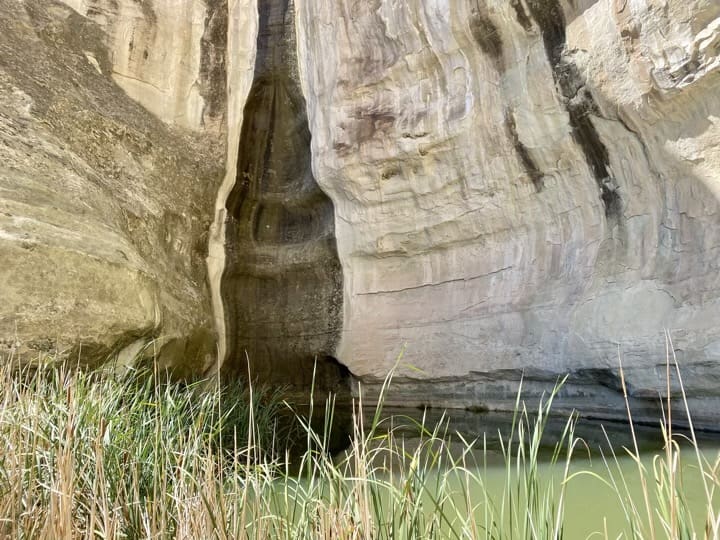
The natural water pool, fed by rainfall, at the base of the El Morro is why El Morro became a favorite landmark in this area and why the Anasazi chose to build the pueblo. The pool can reach a depth of twelve feet when full and never empties.
The reliable and rare water supply discovered here made El Morro a natural stopover for people traveling through this area as far back as 1275 AD.
Inscription Trail
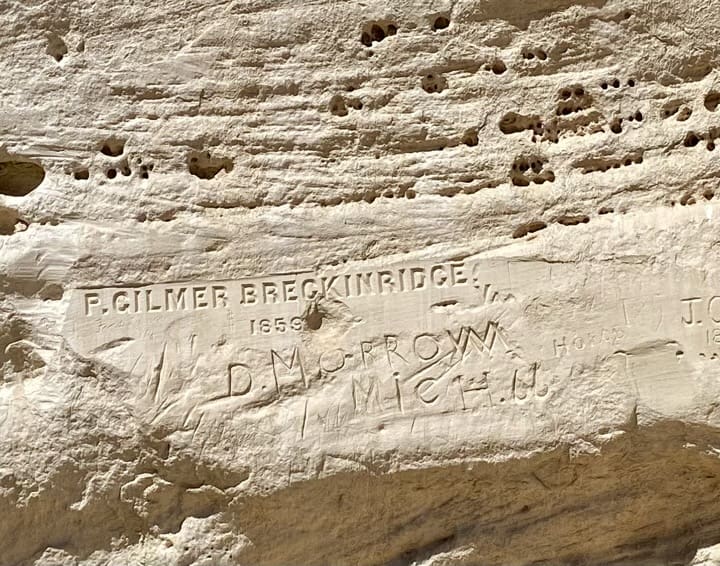
Over 2,000 inscriptions have been carved into the sandstone cliffs by animal antlers, hammerstone, daggers, and horseshoe nails over hundreds of years. Later pioneer settlers most likely used hammers, chisels, knives, and nails; whatever sharp instrument they may have had.
I have never seen anything quite like the El Morro, the Spanish explorers’ name for this area. Meanwhile, Zuni Indians named it Atsinna, which means “place of writings on rock.” Later American travelers called this area Inscription Rock.

Some of the inscriptions and petroglyphs are faded and difficult to read, and others are well preserved, legible, and date back to 1605! Hundreds of years of history are on display along this Inscription Trail.
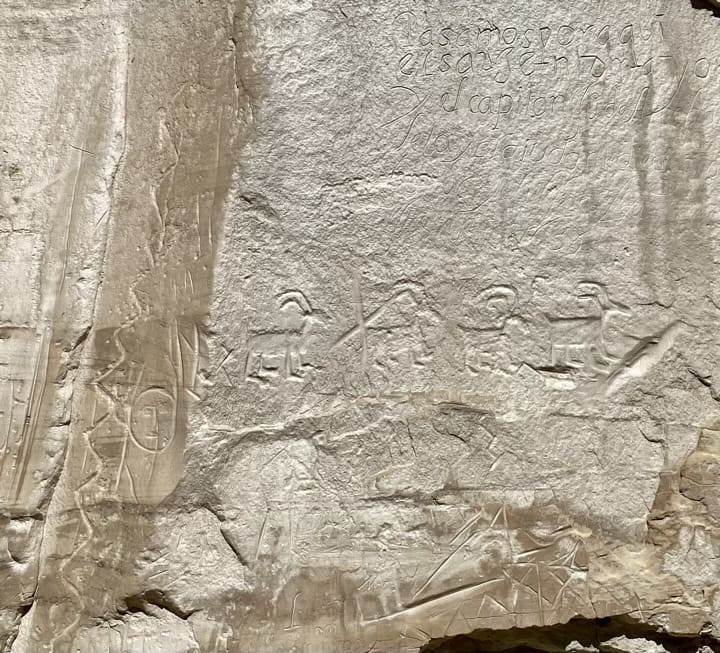
Today, of course, all inscriptions are protected by federal law, and new carvings are not permitted. El Morro is also a designated International Dark Sky Park and displays spectacular night skies.
An amazing storyteller
We met the most colorful older (than us!) gentleman sitting on a bench at the base of the water pool along Inscription Trail. He was a retired teacher and shared fascinating stories about his past students and his life as a teacher.
We could tell from his stories what a tremendous difference he had made in so many young lives during his teaching career.
The Headland Trail

The Headland Trail was a great adventure and workout for our round little bodies. It is a two-mile loop that includes the Inscription Trail. We chose to take this trail to the top of the bluff where the pueblo ruins are and return down, taking the same route.
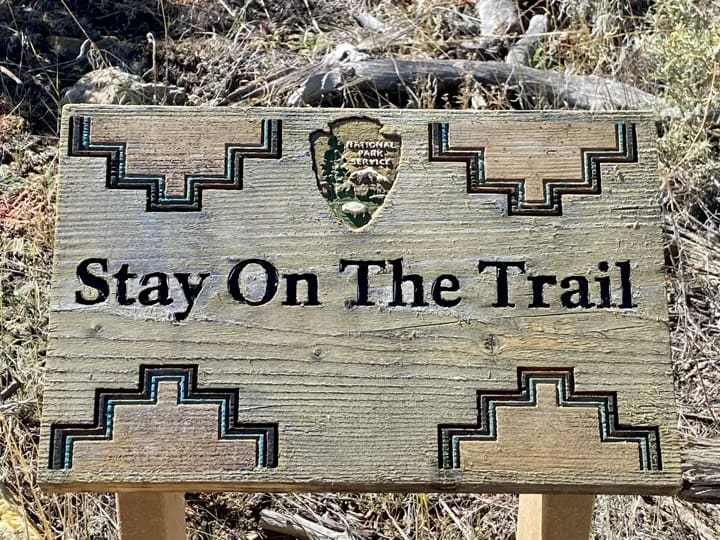
The Headland Trail has a 250-foot elevation gain, and the trail is often uneven and includes areas with multiple stair steps. We were not up to the challenge of the downhill trail where we were required to climb over rocks – we’re old, remember?
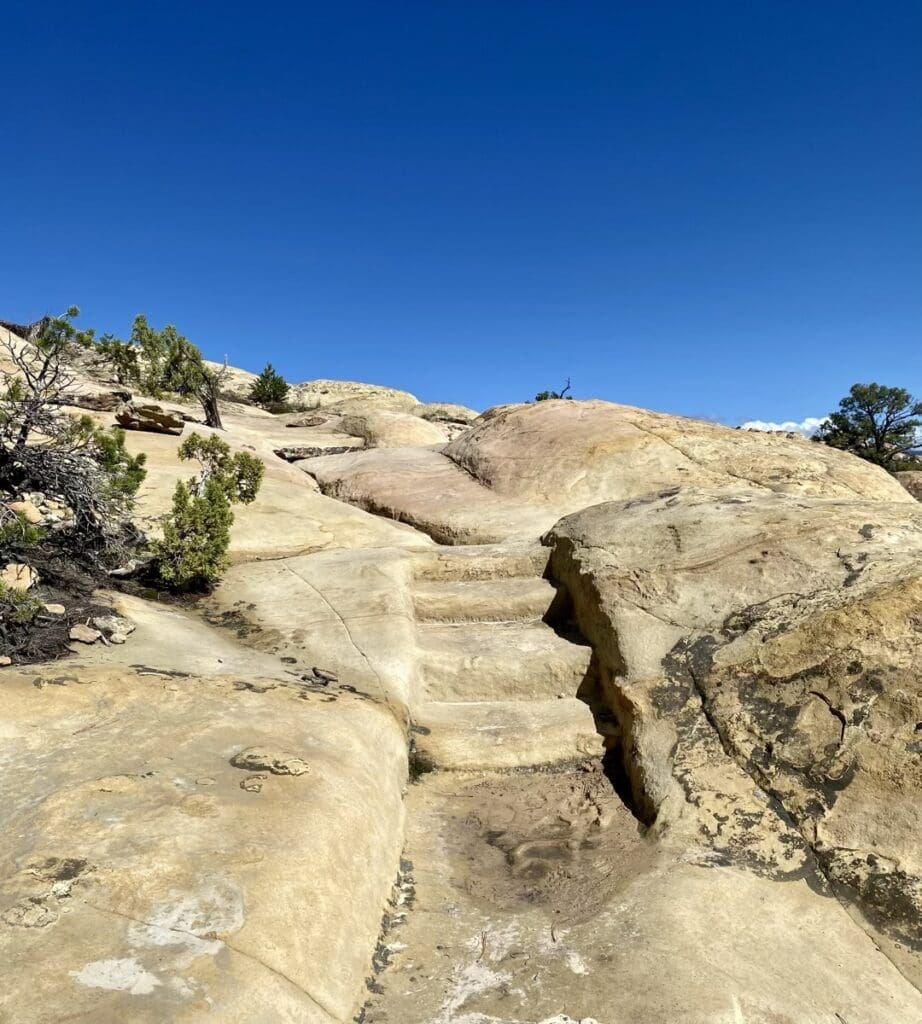
The view at the top of this trail is spectacular. You can see nearby volcanic craters, the Zuni Mountains, and the valley below. Although, I cannot imagine taking this trail in the heat of mid-summer!
Atsinna
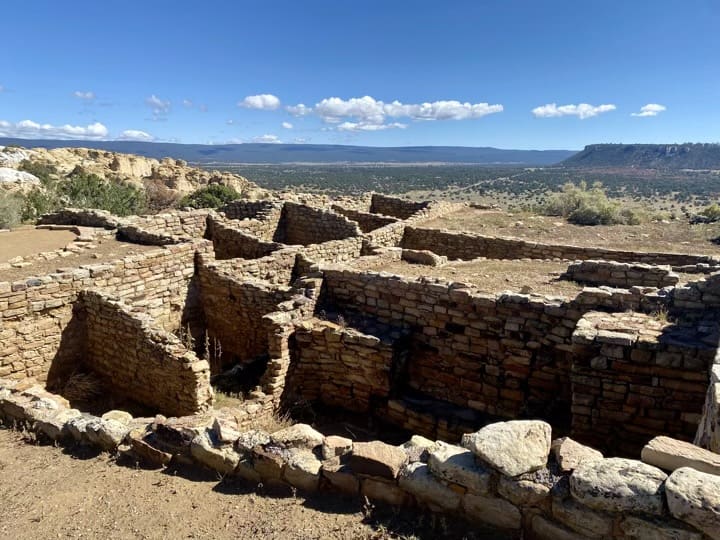
Atsinna is the magnificent pueblo ruin at the top of the Headland Trail. During 1275 and 1350 AD, the pueblo ruins we saw were home to probably 1,500 people, and the pueblo contained nearly 900 rooms! Excavations and stabilization were performed here in the 50s.
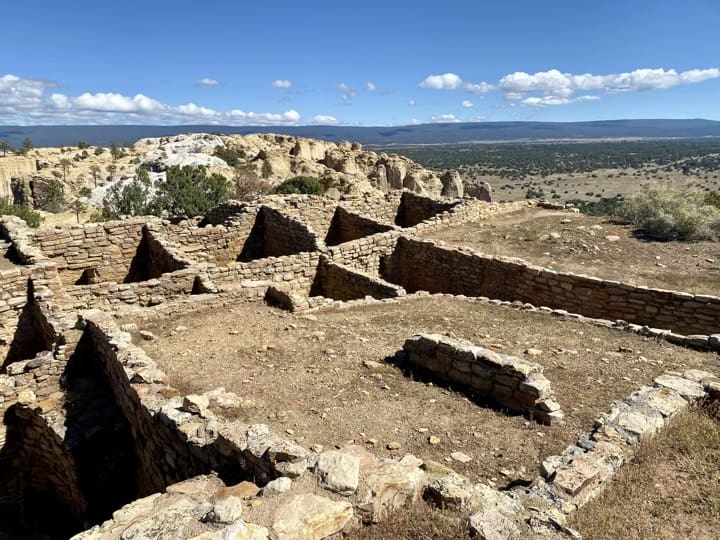
The size of these ruins perched up on the bluff in such an isolated and remote area was incredible to see.
We recently visited the pueblo ruins at Besh-Ba-Gowah Archaeological Park in Globe, Arizona. The Archaeological Park is part of these ruins. However, the pueblo ruins at El Morro are at the top of a ridge, at the top a two-mile loop trail built into the bluff.
Zuni Pueblo
There are nineteen Pueblos in New Mexico, with the Zuni Pueblo, believed to be descendants of the Anasazi, the largest and considered the most traditional. The Zuni are predominately involved in the making and production of arts and are famously known for their skills.

Our Lady of Guadalupe mission church was constructed in 1629 by the Spanish. It was never fully utilized as a church because the Zuni weren’t very open to being forced to become Catholics. The Church stands as a symbol today.
Zuni is a self-governed and sovereign nation today. The majority of Zuni’s residents make their home in the Zuni main village. The Zuni observe many traditional ceremonies throughout the year.
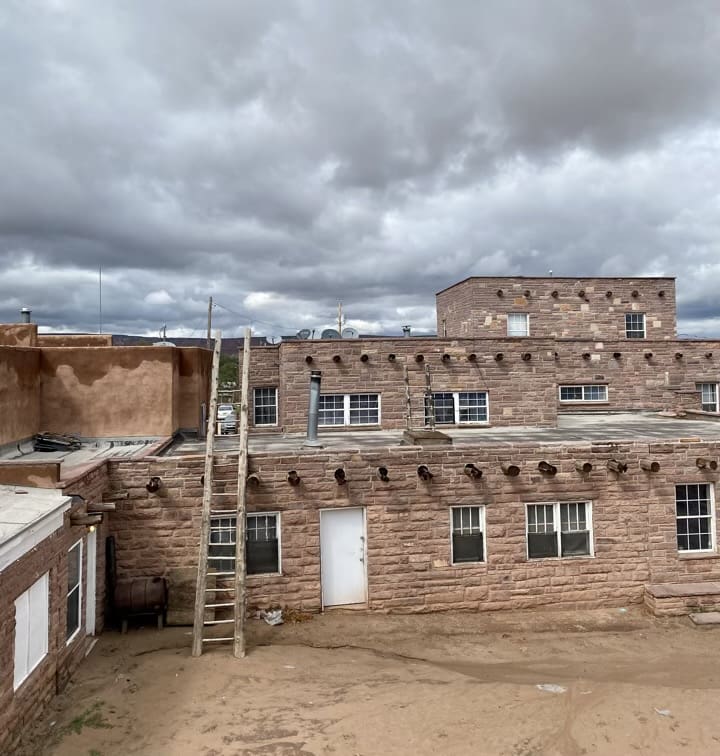
We were very fortunate to experience a fantastic tour of the Zuni pueblo with our knowledgeable guide, Otto Lucio. Otto drove us from the Zuni Visitor’s Center to the Zuni Pueblo. He guided us through the village on foot and explained the Zuni history and Pueblo life today.
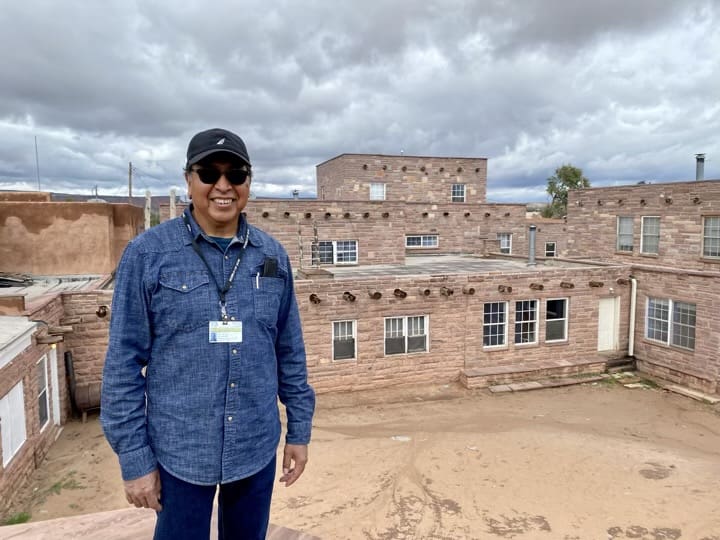
The Zuni Tribe has a long history. In 1540 Francisco Vásquez de Coronado traveled from Mexico searching for the Seven Cities of Gold. He discovered the six Zuni villages known as Hawikuh, Kianawa, Kwakina, Halona, Matsaki, and Kiakima.
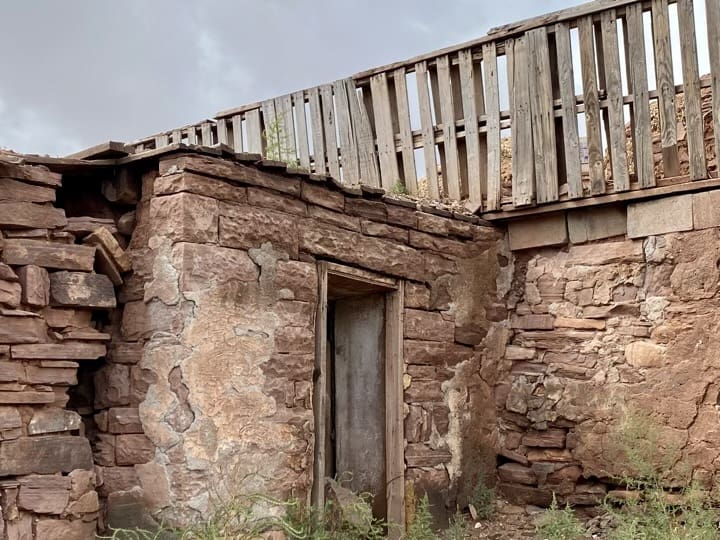
When Coronado arrived in this part of New Mexico, each of the Native American villages consisted of multi-storied structures. They were agricultural people, spoke a foreign language that was not Spanish. Also, each of the Tribes practiced pagan rituals (not Catholicism).
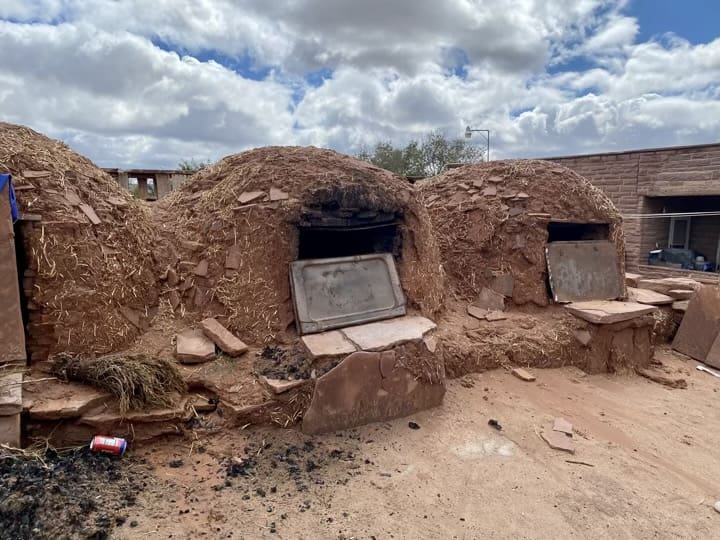
Because of these commonalities, all the Native American villages were named Pueblos by the Spanish. The Spanish gave the Zuni people the name of Zuni, although they have always referred to themselves as Ashiwi.
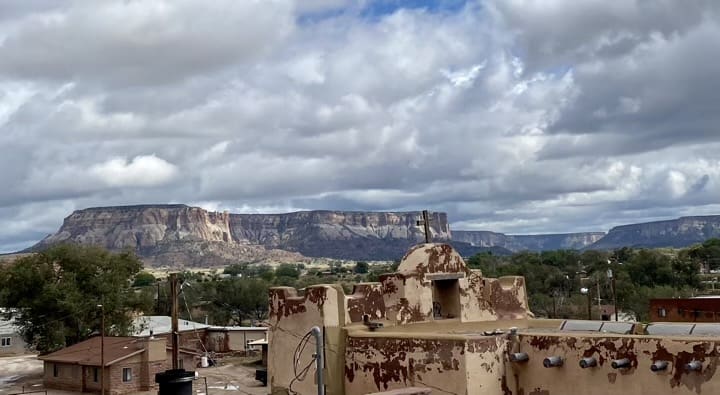
We learned so much about the Zuni people. We are looking forward to a return visit to New Mexico and visiting other Pueblos in the area.
Grants, New Mexico
We drove into nearby Grants to take this fun photo of our Jeep at the Route 66 archway. There are several Route 66 shops here in this small New Mexico town. We had a good and affordable New Mexican lunch at El Cafecito.

We have reached the end of our Arizona and New Mexico adventure. Check back next week as we begin our wandering route back home.
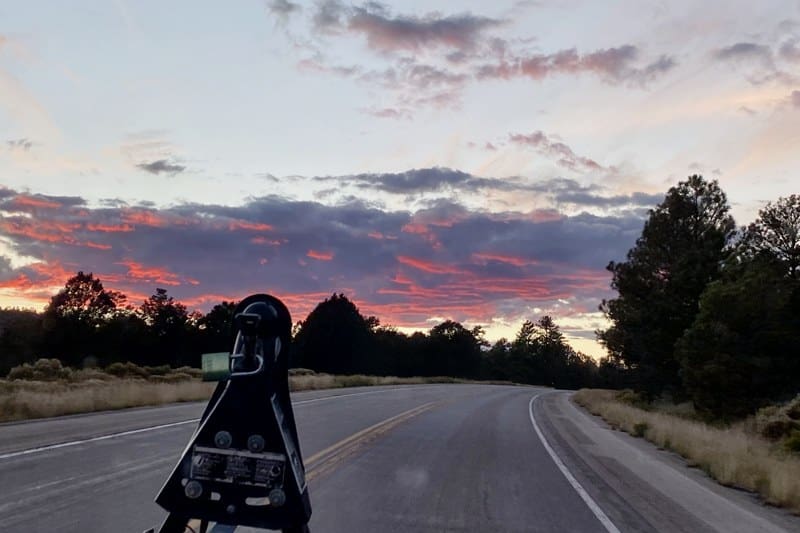
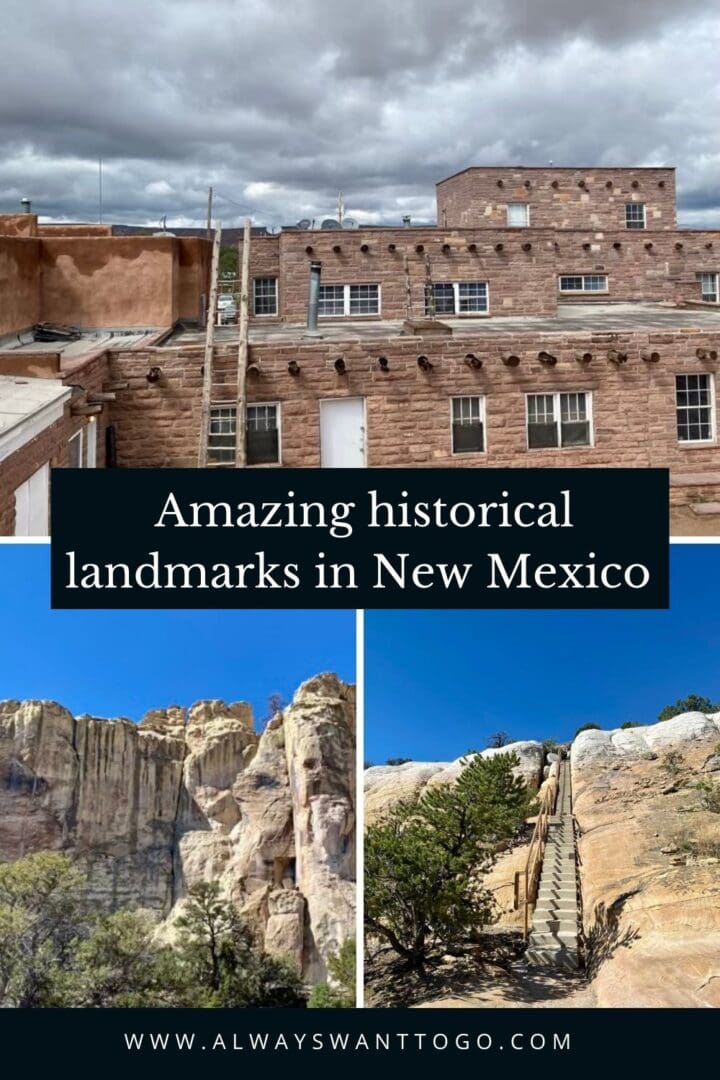
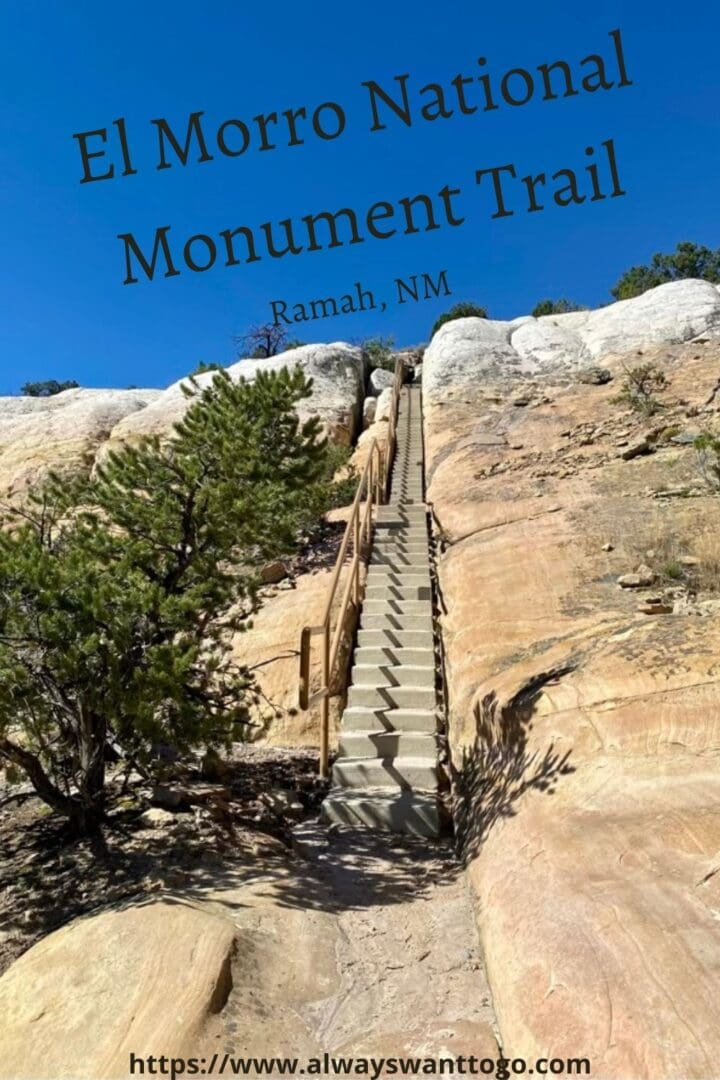
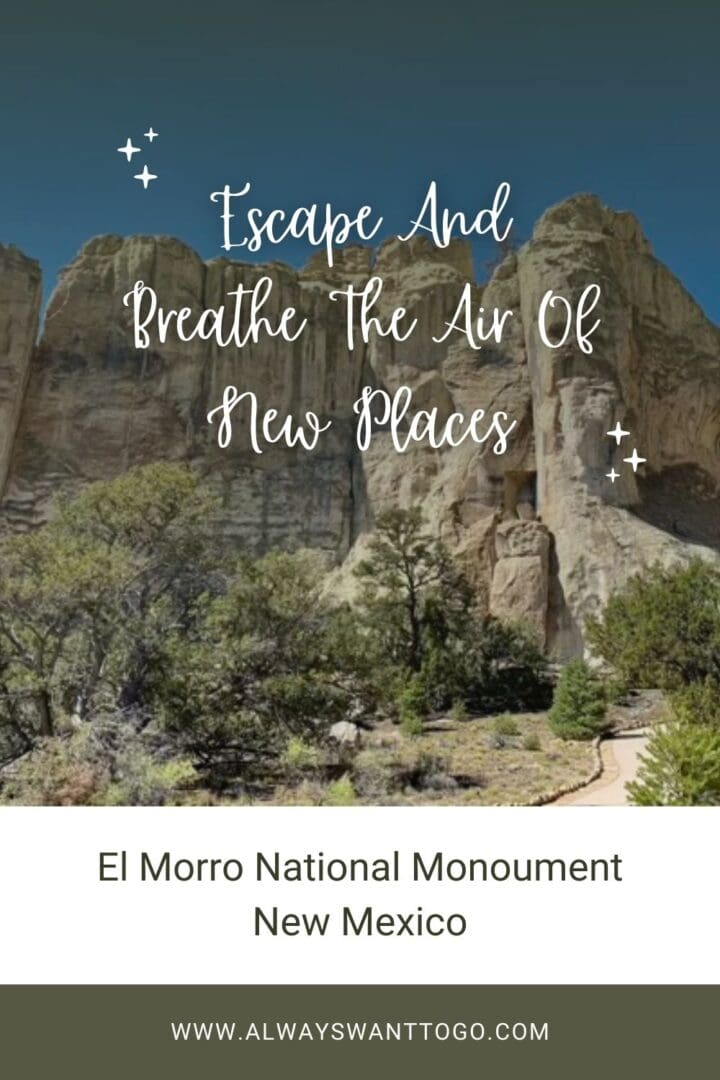

One thought on “Historical landmarks in New Mexico”